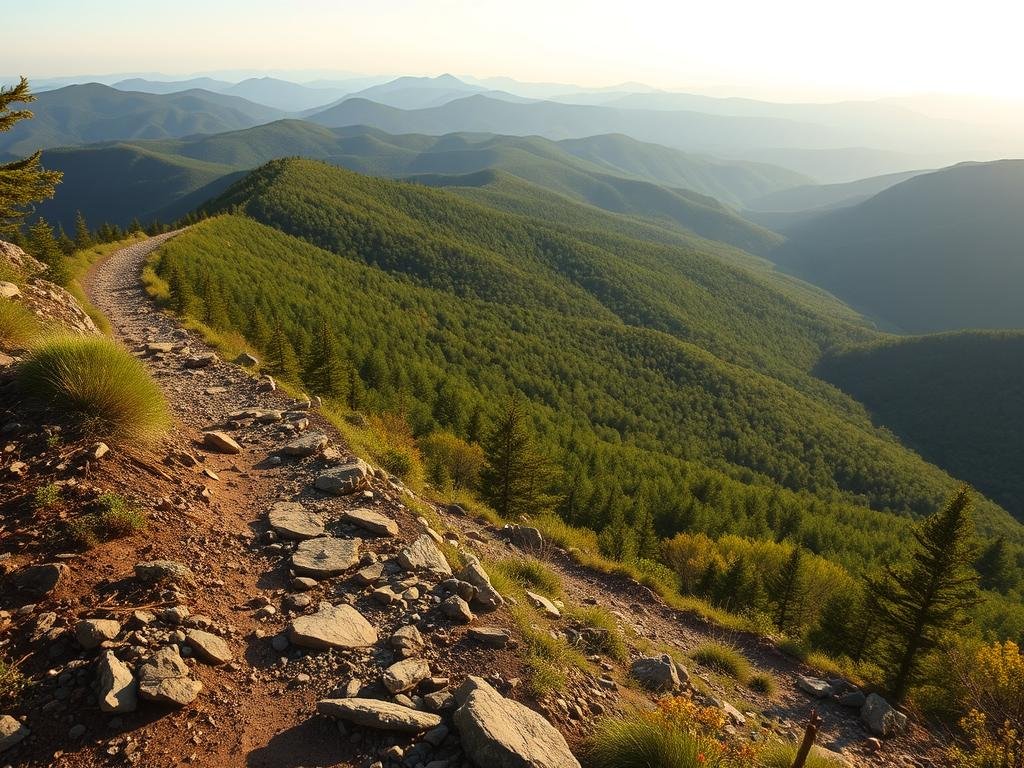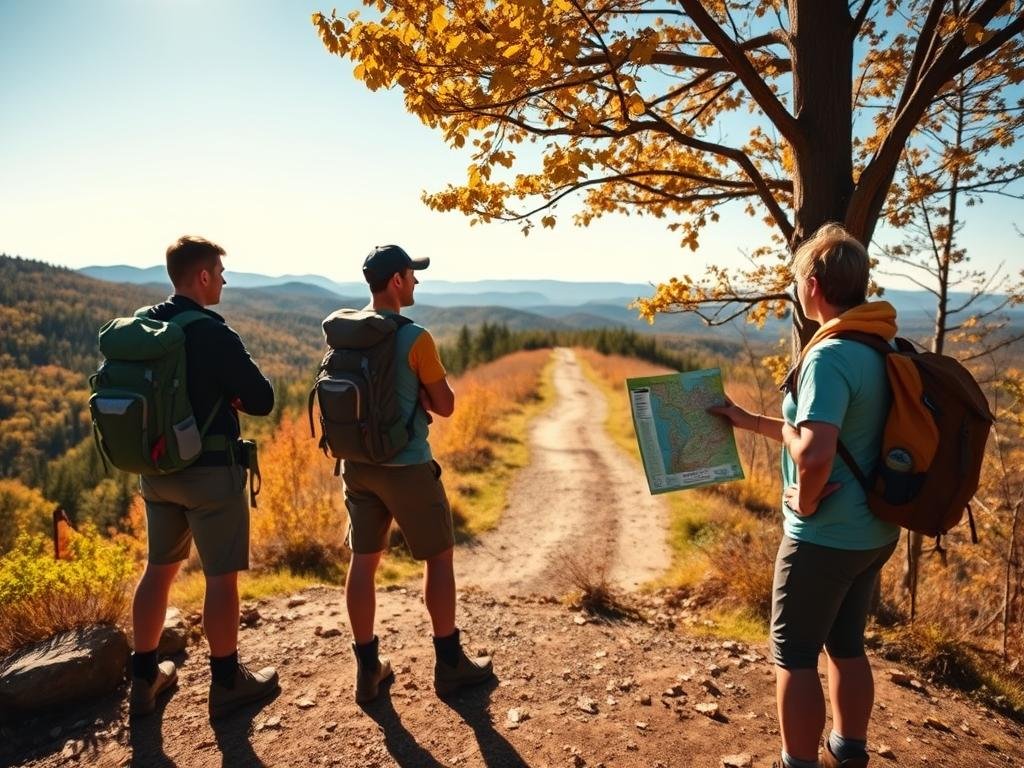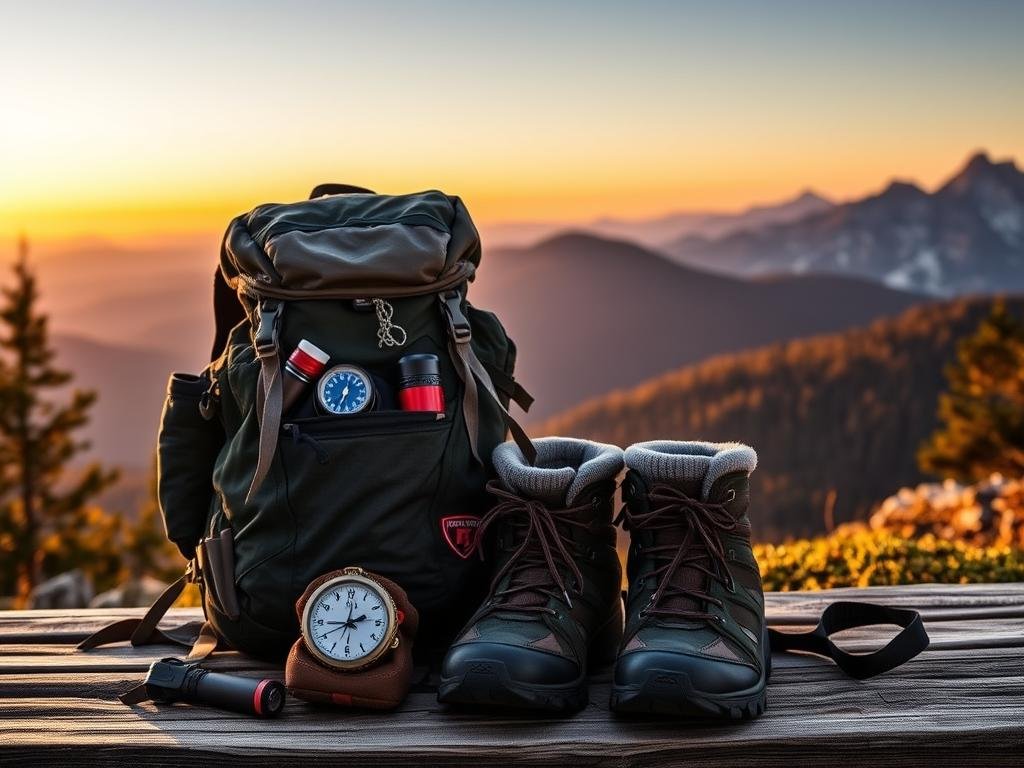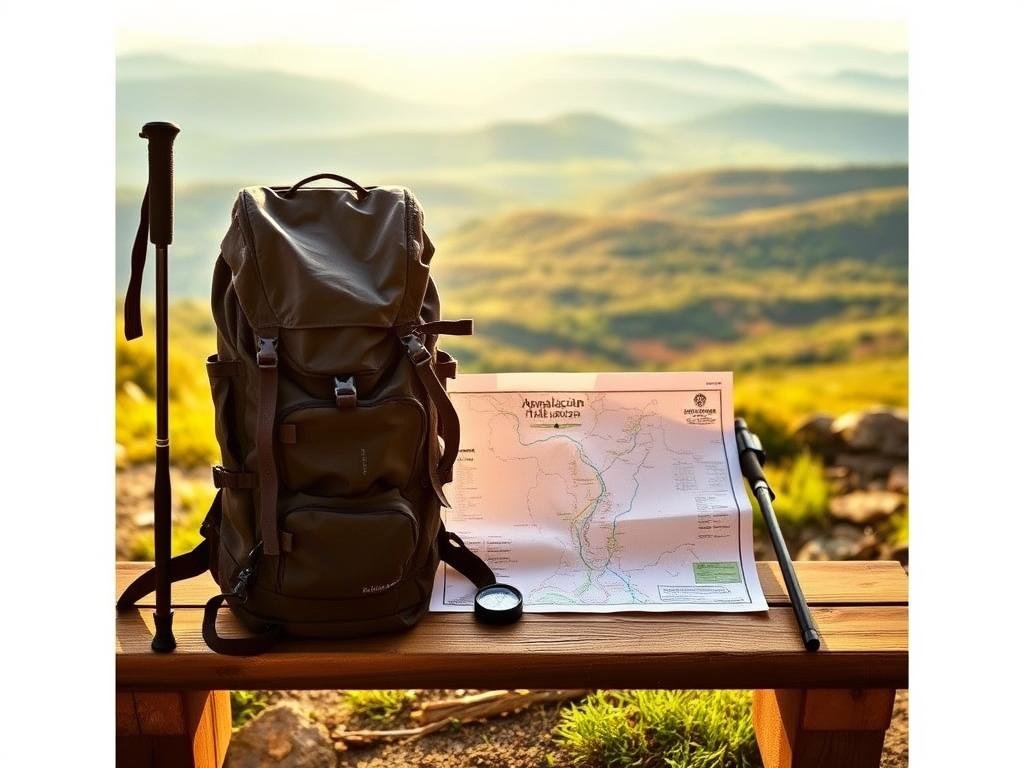The Appalachian Trail is more than just a path through the wilderness. It’s a cultural icon, a test of endurance, and a journey that has inspired countless adventurers. Spanning over 2,184 miles and passing through 14 states, this trail offers a unique blend of natural beauty and physical challenges.
My first encounter with this legendary route was at age nine, during a family trip to Mount Washington. The vastness of the landscape left a lasting impression, sparking a lifelong fascination with long-distance trails. Benton MacKaye’s vision in 1921 to create a wilderness escape from industrialization has since grown into a global inspiration, influencing trails like the Israel National Trail.
Despite its shorter length compared to other triple crown trails, the Appalachian Trail is renowned for its elevation changes, equivalent to climbing Mount Everest 16 times. Weather extremes and encounters with wildlife, such as black bears and rattlesnakes, add to its complexity. Yet, its rich history and accessibility make it a popular choice for beginners.
This guide will help you navigate the trail’s challenges, from planning your mileage to testing gear in adverse conditions. With proper preparation, you can turn this daunting journey into a rewarding adventure.
Table of Contents
Key Takeaways
- The Appalachian Trail spans 2,184 miles across 14 states.
- It features elevation changes equal to climbing Mount Everest 16 times.
- Weather extremes and wildlife encounters are common challenges.
- Proper gear testing and mileage planning are essential for success.
- The trail’s history and accessibility make it ideal for beginners.
What Makes the Appalachian Trail Unique
What sets the Appalachian Trail apart is its rich history and vibrant hiker culture. Originally designed in the 1930s, it was created to help city folk connect with nature and enjoy outdoor adventures with their families. Today, it remains a testament to community and shared experiences.

One of the trail’s most unique features is its shelter system. With over 260 shelters spaced every 8.5 miles, hikers can enjoy a communal experience while resting. These shelters, designed with a focus on shared resources, reflect the trail’s emphasis on camaraderie.
A Trail Steeped in History and Community
The Appalachian Trail is more than just a path—it’s a cultural hub. Events like the Trail Days Festival in Damascus, VA, bring hikers together to celebrate their shared journey. This festival highlights the trail’s community-driven atmosphere and its role as a gathering point for fellow hikers.
Safety is another key aspect. Despite its popularity, with over 3 million annual users, the trail has only recorded 13 murders since 1974. This statistic underscores the trail’s reputation as a safe and welcoming environment for hikers of all levels.
Comparing the AT to Other Long-Distance Trails
The Appalachian Trail’s “green tunnel” environment, with dense tree coverage, offers a unique experience compared to western trails known for alpine vistas. Its white blaze marking system is also distinct, guiding hikers through its 2,184-mile journey.
Volunteer maintainers and trail angels play a crucial role in keeping the trail accessible. Their efforts ensure that hikers can enjoy the trail’s beauty while fostering a culture of mutual aid and support.
From its history to its community spirit, the Appalachian Trail stands as a one-of-a-kind adventure. Whether you’re a seasoned hiker or a beginner, its unique features make it a must-explore destination.
Thru-Hiking the Appalachian Trail for Beginners: Defining the Challenge
Embarking on a long-distance trek requires understanding the physical and environmental challenges ahead. The journey spans over 2,190+ miles, with hikers typically completing it in 5 to 7 months. To succeed, you’ll need to prepare for elevation changes, unpredictable weather, and varying terrain.

Understanding Mileage and Elevation
On average, hikers cover 8-15 miles per day, with some aiming for 15-18 miles to finish within the typical timeframe. However, elevation changes add complexity. For example, Mahoosuc Notch is known as the “hardest mile” due to its rugged terrain.
Elevation gain and loss vary by state. Here’s a breakdown of key sections:
| State | Elevation Gain | Elevation Loss |
|---|---|---|
| Georgia | 30,000 ft | 28,000 ft |
| Virginia | 50,000 ft | 48,000 ft |
| Maine | 40,000 ft | 38,000 ft |
PUDs, or “pointless ups and downs,” are a common challenge. These small elevation changes can tire hikers quickly, even if they seem minor on paper.
Seasonal Weather Considerations
Weather conditions vary significantly along the trail. Northbound hikers often face wintry conditions in March and April, while summer brings hot, humid days. Temperatures can range from 20°F to 100°F, depending on the region and time of year.
Humidity also plays a role, increasing exertion levels during summer months. Southbound hikers, on the other hand, must contend with blackfly season in Virginia.
Here’s a monthly weather breakdown for key regions:
- March-April: Snow and cold in northern sections.
- June-August: High heat and humidity in southern sections.
- September-October: Cooler temperatures, ideal for finishing.
Foot swelling is another factor to consider. Many hikers find their shoe size increases by half or even a full size due to prolonged walking. Plan accordingly to avoid discomfort.
Choosing Your Direction: NOBO, SOBO, or Flip-Flop
Deciding which way to tackle this iconic journey is one of the first big choices you’ll make. Each direction—northbound (NOBO), southbound (SOBO), or flip-flop—offers unique challenges and rewards. Your choice will shape your experience, from the weather you face to the crowds you encounter.

Pros and Cons of Northbound (NOBO) Hikes
NOBO is the most popular route, with over 3,000 hikers starting annually. Beginning in Georgia, it offers a traditional experience with no permits required. However, the 8.5-mile approach trail to Springer Mountain can be a logistical challenge.
One major advantage is the social aspect. Starting in spring means you’ll meet many fellow hikers along the way. However, early spring snow in Georgia can pose risks.
Southbound (SOBO) Challenges and Rewards
SOBO hikes begin in Maine, with fewer than 500 hikers starting annually. This route offers solitude but comes with challenges like securing permits and navigating the 100-Mile Wilderness early on.
Starting in June helps avoid spring mud and crowded campsites. However, you’ll need to plan around Baxter State Park’s Memorial Day opening.
Flip-Flop Strategies for Avoiding Crowds
Flip-flop hikes are a great way to avoid peak crowds. For example, starting at Harpers Ferry splits the journey into manageable sections. This approach also allows you to avoid extreme weather in certain regions.
Another option is starting in February, which is viable south of Vermont. This strategy reduces competition for shelters and resources.
| Direction | Start Point | Key Challenges | Key Rewards |
|---|---|---|---|
| NOBO | Georgia | Spring snow, crowds | Social opportunities, tradition |
| SOBO | Maine | Permits, 100-Mile Wilderness | Solitude, fewer crowds |
| Flip-Flop | Harpers Ferry | Logistical planning | Weather flexibility, reduced crowds |
Whether you choose NOBO, SOBO, or a flip-flop, each direction offers a unique way to experience this incredible journey. Consider your preferences and prepare accordingly for the adventure ahead.
Essential Gear for Your Thru-Hike
Packing the right gear can make or break your journey. From footwear to layering systems, every item plays a crucial role in ensuring comfort and safety. Here’s a breakdown of the essentials you’ll need to tackle the challenges ahead.

Footwear: Boots vs. Trail Runners
Choosing the right shoes is critical. Many hikers prefer mesh trail runners for their breathability and lighter weight, while others opt for boots for added ankle support. Trail runners often need replacing every 400 miles, so durability is key.
Break in your footwear before starting and consider sizing up to accommodate swollen feet during long days on the trail. Insoles like Superfeet Trailblazer can provide extra support and reduce foot pain.
Layering Systems for Variable Weather
Weather conditions can change rapidly, so a versatile layering system is essential. Start with a moisture-wicking base layer, such as Merino wool, which also resists odors. Add an insulating mid-layer like a fleece jacket and a waterproof outer layer to stay dry in Southern humidity.
A 20°F rated sleeping bag is recommended for cold nights, ensuring warmth without adding bulk. Lightweight and compact options are ideal for long-distance travel.
Must-Have Accessories
Accessories like trekking poles and Buffs can enhance your experience. Trekking poles reduce strain on knees and help with balance, while Buffs serve multiple purposes, from neck protection to a makeshift pillowcase.
Water purification is another critical consideration. Options like Sawyer Squeeze filters or chemical treatments ensure safe drinking water throughout your journey. Don’t forget a first aid kit with essentials for blisters, snake bites, and other injuries.
Physical and Mental Preparation
Success on the trail depends on both body and mind working in harmony. Preparing for the journey ahead requires more than just packing the right gear. It’s about building endurance, resilience, and a mindset that can handle the challenges of long days on the path.

Training Tips for Trail Readiness
Start early and gradually increase your mileage to build endurance. Training with a weighted pack simulates trail conditions and strengthens your body. Stair training is particularly effective for preparing for elevation changes.
Develop “trail legs” by incorporating long hikes into your routine. This helps you understand how your body responds to extended periods of activity. Consistency is key, but avoid overtraining to prevent injuries.
| Training Milestone | Duration | Goal |
|---|---|---|
| Short Hikes | 1-2 months | Build basic endurance |
| Weighted Pack Hikes | 2-3 months | Simulate trail conditions |
| Long Hikes | 3-4 months | Develop trail legs |
Building Mental Resilience
Mental toughness is just as important as physical strength. The journey can be lonely, so find ways to stay motivated. Journaling and audiobooks can provide mental breaks and keep your spirits high.
Prepare for the “Virginia Blues,” a common mid-trail slump. Mantras like “Hey, it’s a great day” can help maintain a positive mindset. Remember, the trail is a metaphor for life—embrace the challenges and enjoy the journey.
Navigating the Trail: Blazes, Maps, and Apps
Navigating the trail requires a mix of traditional and modern tools to stay on course. From understanding trail markers to leveraging digital resources, having the right knowledge ensures a smooth and safe journey.
How to Follow White Blazes and Cairns
White blazes are the primary markers, measuring 2 inches wide and 6 inches tall, stenciled consistently on trees, rocks, and poles. These blazes guide hikers through the trail, with double blazes indicating directional changes.
In challenging sections like Mahoosuc Notch, cairns (rock piles) serve as navigational aids, especially in foggy conditions. Blue blazes mark alternate routes to shelters or side trails, offering flexibility for rest or exploration.
Best Digital Resources for Navigation
Digital tools like the FarOut app integrate water reports and elevation profiles, helping hikers plan their day efficiently. The app also includes user comments on trail conditions, making it a valuable resource for real-time updates.
For offline use, paper maps and compasses are essential backups. Ridge runners, who patrol the trail, also assist with wayfinding and provide updates on trail conditions.
- Double Blazes: Indicate turns or changes in direction.
- Shelter Blue Blazes: Lead to nearby shelters or lookouts.
- Battery Management: Carry a portable charger to keep devices powered.
- Unmarked Crossings: Use maps to navigate dangerous road crossings.
By combining traditional markers with modern apps, you can confidently navigate even the most challenging sections of the trail. Always carry a backup compass and stay aware of your surroundings to ensure a safe and enjoyable journey.
Where to Sleep: Shelters, Tents, and Stealth Camping
Finding the right place to rest can make or break your journey. Whether you prefer the camaraderie of shelters, the privacy of a tent, or the flexibility of stealth camping, each option has its pros and cons. Understanding the rules and etiquette for each will ensure a smooth and enjoyable experience.
Shelter Etiquette and First-Come Rules
Shelters are a popular choice, offering a communal space for hikers to rest. They vary in size, accommodating 5 to 20 people, and operate on a first-come, first-served basis. During peak seasons, they can fill up quickly, so arriving early is key.
It’s important to respect shared spaces. Keep noise levels low, especially at night, and avoid monopolizing areas. Earplugs can be a lifesaver for mitigating snoring or chatter from fellow hikers. Additionally, always follow Leave No Trace principles to minimize your impact.
Choosing Between Tents, Hammocks, and Tarps
For those seeking privacy, tents and hammocks are excellent alternatives. Tents provide protection from the elements and pests, while hammocks are ideal for areas with suitable tree spacing. Wide straps are recommended to prevent tree damage.
Condensation can be an issue with both options. Tents may trap moisture, while hammocks can leave you exposed to dew or rain. Tarps offer a lightweight solution but require careful setup to ensure coverage.
Stealth Camping and Leave No Trace
Stealth camping is permitted on US Forest Service lands in specific states, provided you follow Leave No Trace principles. This means camping in established sites, avoiding fragile areas, and packing out all waste.
In regions like the Smokies, bear cable systems are commonly used to store food safely. Winter shelters may face mouse challenges due to years of use, so secure your food and gear.
Ultimately, your choice of sleeping arrangements will depend on your preferences and the conditions of the trail. Plan ahead, respect the environment, and enjoy the journey.
Resupply Strategies: Food Drops vs. Town Stops
Planning your resupply strategy is crucial for a smooth journey. Whether you choose food drops or town stops, understanding the pros and cons of each can help you stay fueled and focused over thousands of miles.
Planning Your Resupply Points
Carrying food for 3-7 days is the sweet spot for most hikers. This range balances weight and ensures you don’t run out of supplies. Mail drops can be cost-effective, but they limit access to fresh items, making town stops essential for variety.
Surveys show that 64% of hikers use mail drops, with 71% finding them beneficial. However, grocery resupply offers flexibility and allows you to adjust your diet based on cravings or nutritional needs.
Making the Most of Hiker Boxes
Hiker boxes are a treasure trove of leftover supplies. Always follow etiquette—take only what you need and leave useful things for others. These boxes can be a lifesaver when you’re running low on essentials.
For vegan hikers, finding calorie-dense meals can be challenging. Hiker boxes often contain snacks like nuts or dried fruit, which are great for meeting dietary needs.
To avoid the “town vortex,” resupply efficiently. Plan your stops in advance and stick to your list to prevent overbuying. Hoarding condiments like hot sauce or salt packets can add flavor to your meals without extra weight.
- Cost Comparison: Mail drops average $300-$1,000 monthly, while grocery resupply can vary based on location and diet.
- Snack Ideas: Try a Flamin’ Hot Cheetos trail mix for a spicy, high-energy treat.
- Diabetes-Friendly Options: Focus on low-glycemic snacks like nuts, seeds, and jerky.
Trail Safety: Risks and How to Mitigate Them
Staying safe on the trail requires awareness of both natural and environmental risks. From wildlife encounters to extreme weather conditions, preparation is key to ensuring a smooth and enjoyable journey. Understanding these challenges and how to handle them can make all the difference.
Wildlife Encounters: Bears, Snakes, and Bugs
Encountering wildlife is a common part of the experience. Bears, for example, are often attracted to food, so using bear canisters or Ursacks for storage is essential to prevent negative interactions. Always hang food properly or use designated bear cables in areas like the Smokies.
Snakes, such as copperheads and timber rattlers, are another concern. Be cautious in rocky or wooded areas, especially during warmer months. If bitten, stay calm and seek medical help immediately.
Bugs, particularly ticks, pose a health risk. Perform daily tick checks and use bug spray to reduce the chance of bites. Lyme disease symptoms, like fever and rashes, require prompt medical attention.
Handling Extreme Weather and Hypothermia
Extreme weather can be unpredictable. Mount Washington, for example, holds the record for the highest wind speed at 231 mph and has seen over 60 fatalities in the Presidential Range. Always check forecasts and carry proper gear.
During thunderstorms, assume a crouched position with feet close together, hands on knees, and head tucked to minimize lightning risk. Avoid open areas and tall objects.
Hypothermia is a serious concern in cold weather. Watch for early signs like “umbles” (stumbles, mumbles, grumbles). Stay dry, layer clothing, and seek shelter if symptoms appear.
River crossings can also be hazardous. Always assess the water level and current before attempting to cross. Use trekking poles for stability and avoid crossing during heavy rain.
By staying informed and prepared, you can navigate these risks and enjoy your journey safely. Always prioritize safety and respect the environment to ensure a positive experience.
Embrace the Community: Trail Angels and Traditions
The spirit of the trail is defined by the kindness of strangers and the bonds formed along the way. From unexpected acts of generosity to shared moments of triumph, the community here is as much a part of the journey as the path itself. Whether it’s a warm meal from a trail angel or a heartfelt conversation with a fellow hiker, these experiences shape the adventure in profound ways.
The Role of Trail Angels and Ridge Runners
Trail angels are the unsung heroes of the journey, offering everything from rides to meals and words of encouragement. Their acts of kindness, often referred to as trail magic, provide much-needed support and inspiration. Ridge runners also play a vital role, educating hikers on Leave No Trace principles and ensuring the trail remains safe and accessible.
Famous trail angels, like the Cookie Lady, have become legends for their generosity. These individuals often go out of their way to make hikers feel welcome, creating a sense of family along the way.
Understanding Trail Names and Culture
Adopting a trail name is a cherished tradition among hikers. These names often reflect personal significance or unique experiences. For example, Pippin chose his name for its spiritual connotations, while others might draw inspiration from their journey or personality.
Trail culture also includes traditions like signing shelter registers and observing hiker midnight (9 PM). These practices foster a sense of belonging and shared purpose.
Blazing ethics, such as following white blazes for the main trail and blue blazes for side trails, are essential for navigation and respect for the path.
From trail angels to trail names, the community here is as rich as the landscape. Embrace these traditions, and you’ll find that the journey is about more than just the miles—it’s about the people you meet along the way.
Leave No Trace Principles on the AT
Preserving the trail’s natural beauty is a shared responsibility for every hiker. By following Leave No Trace principles, you ensure the environment remains pristine for future adventurers. These practices are especially important in high-traffic areas, where even small actions can have a big impact.
Minimizing Impact in High-Traffic Areas
High-traffic areas require extra care to prevent erosion and habitat disruption. Always stay on marked trails to avoid damaging vegetation. When setting up camp, choose durable surfaces like rock or gravel, and keep your site small to minimize your footprint.
Proper waste disposal is critical. Human waste should be buried in catholes 6-8 inches deep and at least 200 feet from water sources. Pack out toilet paper to avoid attracting wildlife and maintain cleanliness.
Proper Waste Disposal Practices
Waste management is a key part of Leave No Trace. Food scraps and spills can attract animals, so clean up thoroughly and pack out all trash. Use bear canisters for food and scented items to prevent wildlife encounters.
When using biodegradable soap, do so at least 200 feet from water sources to avoid contamination. For feminine hygiene products, pack them out in sealed bags to ensure proper disposal.
Volunteer efforts, like graffiti removal and shelter maintenance, also play a vital role in preserving the trail. These actions help maintain the trail’s integrity and ensure it remains a welcoming space for all.
By following these guidelines, you contribute to the trail’s sustainability. Every small action makes a big difference in protecting this iconic way for generations to come.
Budgeting for Your Thru-Hike
Planning your budget is as crucial as packing the right gear for a successful journey. The average monthly cost ranges from $1,000 to $2,000, covering essentials like food, lodging, and gear replacements. However, hidden expenses can quickly add up, so preparation is key.
Estimating Costs for Gear, Food, and Towns
Your budget should account for both fixed and variable expenses. Fixed costs, such as insurance and storage, can total around $2,000 for five months. Variable costs include daily food expenses, which average $10-$15, and town stops, which can cost $50-$75 per day.
Resupplying in towns can be expensive, especially with additional fees for holding packages or unexpected hostel stays. To manage these costs, consider creating a detailed budget spreadsheet and tracking your expenses weekly.
Hidden Expenses to Plan For
Hidden costs like laundry, showers, and shuttles can strain your budget. For example, shuttle services between trailheads can add up, especially in remote areas. Additionally, gear repairs or replacements, such as shoes every 400 miles, should be factored into your plan.
Setting aside an emergency fund of at least $1,000 is highly recommended. This cushion can cover unexpected gear failures, theft, or post-hike expenses. By planning ahead, you can avoid financial stress and focus on enjoying your way.
- Break down gear vs daily expense ratios: Allocate funds for high-quality gear while keeping daily costs manageable.
- Discuss insurance/healthcare considerations: Ensure you’re covered for medical emergencies on the trail.
- Share budget spreadsheet templates: Use tools to track and adjust your spending.
- Analyze state sales tax variations: Be aware of regional differences in costs.
- Detail emergency cash stashing methods: Keep a small amount of cash hidden for emergencies.
- Explain shuttle cost averaging: Plan for transportation expenses between trailheads.
- Compare gear repair vs replacement costs: Decide whether to fix or replace items based on cost-effectiveness.
- Highlight Poncho’s money-saving tips: Learn from experienced hikers to stretch your budget further.
By carefully estimating costs and planning for hidden expenses, you can ensure a smooth and financially stress-free journey. Remember, a well-prepared budget is your best way to enjoy the adventure without unnecessary worries.
Trail Towns and Hostels: What to Expect
Exploring trail towns and hostels is a highlight of any long-distance journey. These stops provide a chance to rest, resupply, and connect with fellow hikers. From bustling towns to quiet retreats, each offers a unique experience along the way.
Popular Stopovers Along the Way
Damascus, VA, is known as the “friendliest town” on the trail, with its annual Trail Days festival featuring food, music, and gear booths. This event draws hikers and locals alike, creating a vibrant community atmosphere.
Hot Springs, NC, is another iconic stop, offering natural hot springs and a charming downtown. Monson, ME, is a favorite for those nearing the end of their journey, with its cozy hostels and welcoming people.
How to Avoid the “Vortex” Effect
Trail towns can be so inviting that hikers lose track of time. To avoid the “town vortex,” plan your resupply efficiently. Use “nero days” (near-zero mileage days) to rest without falling behind schedule.
Hostels like Standing Bear are known for their lively party atmosphere, while Elmer’s Sunnybank offers a quieter alternative for those seeking peace. Choose accommodations that match your energy level and goals.
- Compare iconic stops: Hot Springs for relaxation, Monson for end-of-trail camaraderie.
- Detail hiker discount programs: Many towns offer discounts for long-distance hikers.
- Share laundry/shower cost averages: Budget $5-$10 for these essentials.
- Analyze town meal calorie strategies: Focus on high-calorie meals to refuel efficiently.
- Discuss sobriety-friendly hostel options: Look for hostels that cater to all preferences.
- Recommend post office hour planning: Arrive early to avoid delays.
- Share Poncho’s town arrival routines: Unpack, shower, and resupply in that order.
- Explain “nero day” efficiency tactics: Rest without losing momentum.
Stories from the Trail: Lessons Learned
Every journey on the trail brings unique stories and lessons that shape the experience. From unexpected wildlife encounters to the kindness of strangers, these moments leave a lasting impact. Whether it’s building a fire or navigating sleep deprivation, the trail teaches resilience and adaptability.
Poncho’s Wisdom and Other Hiker Tales
Poncho, a seasoned hiker, emphasizes the importance of preparation. His 30-mile day routines highlight the value of pacing and listening to your body. He also shares a unique fire-building philosophy: “A fire is not just for warmth; it’s for community and reflection.” This mindset reminds us to find joy in the simple things.
Karel Sabbe’s FKT (Fastest Known Time) nutrition plan is another lesson in discipline. Balancing calories and hydration is crucial for endurance. However, sleep deprivation risks are real, and hikers must prioritize rest to avoid burnout.
Unexpected Joys and Challenges
The trail is full of surprises. One hiker recalls encountering a black bear and a moose in the same day, a reminder of nature’s unpredictability. These moments teach respect for wildlife and the importance of staying alert.
Trail romance is another unexpected aspect. Many hikers form deep connections, finding friends or even life partners along the way. These relationships add a layer of joy to the journey.
Post-trail depression is a common challenge. After months of adventure, returning to everyday life can feel overwhelming. Resources like support groups and therapy can help hikers transition smoothly.
| Lesson | Key Insight |
|---|---|
| Fire-Building | Focus on community and reflection |
| Nutrition | Balance calories and hydration |
| Wildlife Encounters | Stay alert and respectful |
| Trail Romance | Form meaningful connections |
| Post-Trail Depression | Seek support for transition |
The trail is more than just a physical challenge; it’s a journey of self-discovery. Whether it’s learning to build a fire or finding joy in unexpected moments, every step brings a new lesson. Embrace the experience, and you’ll leave with stories that last a lifetime.
Why the Appalachian Trail Is for Everyone
The Appalachian Trail offers a unique experience for every type of adventurer. Whether you seek solitude or thrive in social settings, this iconic path provides endless opportunities to tailor your journey. Its adaptability makes it a perfect choice for people of all backgrounds and preferences.
Finding Solitude vs. Socializing
For those who crave peace, the trail’s vast stretches of wilderness offer a chance to disconnect. Shelters are spaced every 8.5 miles on average, allowing hikers to choose between communal stays or remote camping. Winter hiking is also feasible in many areas, providing a quieter experience for solitude seekers.
On the other side, the trail’s strong sense of community is undeniable. Events like the Trail Days Festival in Damascus, Virginia, bring thousands of hikers together, showcasing its welcoming nature. Whether you’re looking to bond with friends or meet new ones, the trail fosters connections.
Customizing Your Hike to Fit Your Style
Flip-flop hiking has seen a 20% increase in popularity since 2015, offering flexibility for those who want to start anywhere and hike in any direction. This approach allows hikers to avoid crowds and tailor their journey to their pace and preferences.
Families can also enjoy the trail, as stories like Mary Anne Hardy’s highlight its potential for creating lifelong memories. Adaptive hiking innovations, such as mindfulness-focused journeys, show how the trail can be used for personal growth and reflection.
| Strategy | Solitude Seekers | Socializers |
|---|---|---|
| Shelter Use | Remote camping | Communal stays |
| Season | Winter hiking | Festival seasons |
| Route | Flip-flop hiking | Traditional routes |
From introverts to extroverts, the Appalachian Trail accommodates everyone. Its inclusivity and adaptability make it a journey worth exploring, no matter your style or goals.
Conclusion
This iconic path offers a transformative experience, blending physical challenges with personal growth. Spanning 2,197.4 miles across 14 states, it provides diverse terrains and unforgettable views. Whether you seek solitude or camaraderie, the journey is yours to shape.
Embrace the HYOH ethos—hike your own hike. Listen to your body, adjust plans as needed, and savor every moment. Resources like the A.T. Guide and Farout app can help you navigate and adapt.
Prepare with weekly training hikes and gear research. The trail’s 2024 updates, including Katahdin’s mid-October closure, are essential for planning. Remember, the summit is not just a destination but a celebration of your resilience.
Start preparing today. This journey is more than a hike—it’s a chance to discover your strength and connect with nature. Take the first step, and let the path guide you.



0 Comments